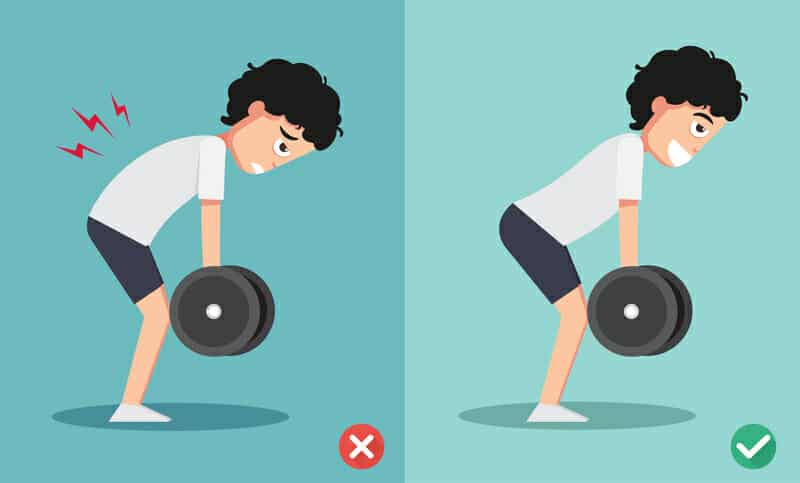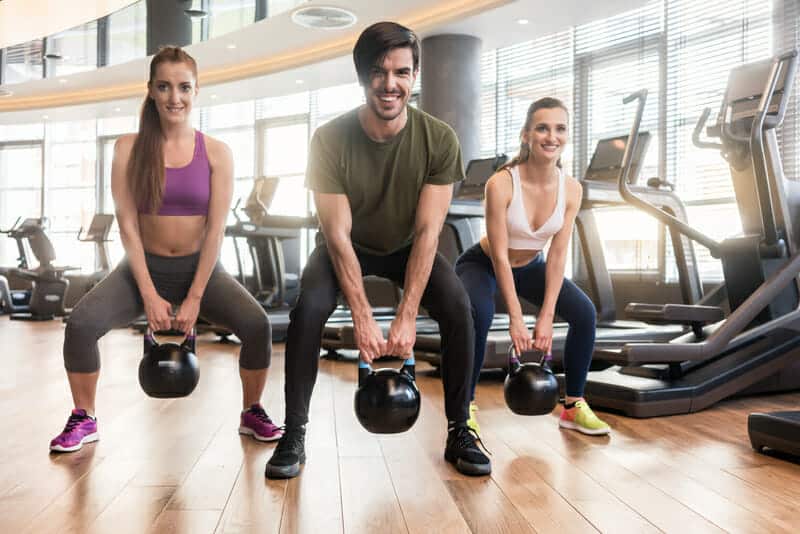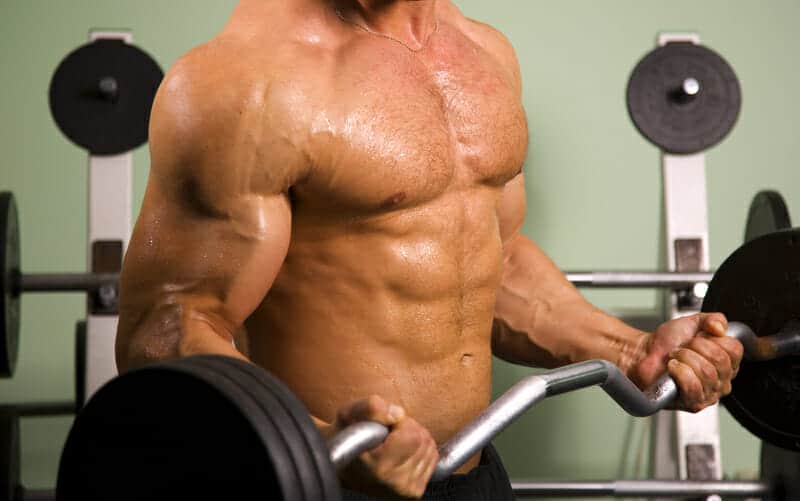Let’s face it: 90% of the people you see in the gym are weak and skinny.
It’s one thing when you start off weak and skinny – everyone has a starting point and we all come from different backgrounds.
What’s unacceptable is when a person STAYS weak and skinny after years of lifting weights in the gym.
When you don’t know what you’re doing in the gym and you don’t see results, it’s easy to quit and give up.
It’s no wonder why some of these appalling gym membership statistics exist:
- The health and fitness industry has a valuation of $38 billion in America ($94 billion around the world)
- 80% of people who join a gym in January quit within the first five months
- Only 47% of members visit their gym 3 times a week during the year
- Gym owners EXPECT only ~23% of members to use their memberships consistently
Today, this comes to an end.
If you want to build an awe-spiring world-class physique in 2021 and beyond, keep reading!
(You’ll notice today’s article is a little shorter on words – eliminating ego and momentum is something much better understood when seen with your own two eyes)
Table of Contents
ToggleThe Characteristics of an Ego-Focused Lifter

When you see someone who cares more about impressing other people instead of building strength and muscle, you’ll see them acting in the following ways.
And if you happen to check off one of these boxes, it’s time to seriously re-examine your training routine!
Ego-Focused Lifters Don’t Take Their Age Into Account
The biggest mistake I see with older lifters is their style of training.
If you are 50 years old, you CANNOT train the same way a young 20-year-old male in their prime can.
Your body cannot handle training 4-5 days per week at 100% intensity, and it simply won’t recover in time for the next workout.
Younger trainees recover faster than older ones – it’s just a fact of life.
This also means certain activities such as running can do some long-lasting damage to your joints, which I talk about in this older yet must-watch video:
Ego-Focused Lifters Are Scared of Doing Foundational Strength Movements
The lifter with a huge ego may be a muscular dude, but he’ll lose his breath trying to climb up a flight of stairs.
He’ll also choose movements that are easiest for him to do, instead of the ones which will build a solid foundation of strength and muscle.
The following exercises are excellent starting points for training large muscle groups and restoring balance to your body, regardless of whether you’re using therapeutic testosterone or not:
- Squats
- Deadlifts
- Overhead Press
- Chest Press
- Rows
- Pulldowns
- Pull-Ups
Ego-Focused Lifters Are Gym Rats
I don’t care how much time you’re spending in the gym.
Show me someone who prides themselves on spending 2 hours in the gym every single day of the week, and I’ll show you someone who makes mediocre progress.
Spending too much time in the gym is “working hard.”
Spending the minimal amount of time in the gym required for maximum muscular gains is “working smart.”
See the difference?
3-5 times a week, for 30-60 minutes per session (maybe a bit longer if you train with a partner) is all you will ever need.
Anything longer and you won’t be able to use proper technique for the rest of the workout:
“Excessively long workouts create a lot of fatigue that will deteriorate your movement patterns, and your technique is going to break down… …That’s not only going to have a negative impact on that workout itself, but the poor technique you engrained in that workout will trickle into the next workout. “
Ego-Focused Lifters Lack Mental Focus
You’re never going to maximize the value out of each and every workout unless you are 100% focused on each and every rep.
This is a skill that will take time and effort to develop.
The second you walk into the gym, your mood should completely change.
You should transform into a beast who is ready to push his body and mind to its absolute limit, and go even further beyond.
If you are not 120% ready to push yourself to exhaustion, you are not focused enough.
Over time, you will find the triggers that help you “snap” into this mode of thinking.
If you’re going to use music to help you, here are a few tips which have worked for myself and my private coaching clients:
- DO NOT listen to your playlist outside of the gym – it is only for working out and nothing else
- Make sure you are lifting to this music frequently so your mind forms the connection between the songs and your level of training intensity
- Avoid heavy metal music – It will tighten you up and you’ll have an aggressively emotional response that causes you to overthink the lift.
Ego-Focused Lifters Get Injured (and Stay That Way)

Even the professionals and the very best athletes in the world get injured from time to time.
Like I said in The TOT Bible, “sprains, strains and tears of ligaments and tendons can (and will) happen.”
What matters is how you treat the injury and take the necessary steps to prevent it from happening again.
This also applies to your mindset, as those who live in FEAR of getting re-injured again will quickly find themselves doing so.
And obviously, DO NOT do a movement if it hurts.
Being a stupid ego-driven gym bro who follows the “no pain, no gain” mantra will leave you injured for far longer.
Focus on healing and getting back to 100% as quickly as humanly possible.
I recommend the following tactics for preventing and recovering from injuries:
- HEAT Therapy
- RICE (Rest, Ice, Compression, Elevation)
- Penetrex (rub on injured area to speed healing process)
- Ibuprofen – 800 mg ever 4-6 hours within the first 2-3 days of getting injured to reduce inflammation.
- Following mobility workouts such as those provided by Kelly Starrett
- Active Release Technique (ART) from a qualified practitioner
- Body tempering, as created by powerlifter Donnie Thompson
- Using therapeutic peptides such as BPC-157 and TB-500
Ego-Focused Lifters Don’t Follow a Proven System For Getting Bigger and Stronger
Committing to a proven training program is asking too much of the lifter with a huge ego.
They would rather do what looks good in muscle magazines, or what will most impress any gym-goers who see them.
As a result, they get half-assed results and look the exact same despite spending YEARS in the gym.
Don’t attempt to re-invent the wheel, and do not let your ego get in the way of doing a program made by someone far smarter and more experienced than you are.
If you’re looking for a program to follow, I highly recommend you pick up a copy of Forged Training, where you’ll discover:
- How to adjust your workout for maximum muscle gain or rapid fat loss
- The basic training principles to create a workout that fits around your busy schedule
- Fundamental training paradigms to guarantee maximal results with minimal time spent in the gym.
- Interactive ideo lessons for using proper form, technique, and tempo.
We were privileged to do an interview with founder Jim Brown about the program, which you can find here.
If you already have a copy of The Metabolic Blowtorch Diet, there are two done-for-you Forged variants you can pick up and start using today!
Ego-Focused Lifters Don’t Record Their Progress
As any good lifter will tell you, progressive overload is the key to building strength and muscle:
“Want to know a magic secret? Progression, or the adding of weight over time, is the fuel that drives muscle and strength building. You could use pretty much any workout system in the world – no matter how poorly structured or devised – and if you’re adding weight to the bar, you will get bigger and stronger.”
But how will you know when it’s time to add weight on the bar if you’re not recording each and every one of your workouts?
Whether through paper or through your phone, you need a logbook to track your past progress, build your current workout and plan for the future.
You need to know EXACTLY what you intend to accomplish with each workout:
- The exercises you want to do, and the sequence in which you will execute them
- The muscle group(s) being worked by the exercises
- How many sets and reps you want to do for each exercise
- The cadence with which each rep will be performed for a given exercise
- How long your rest periods between each set are going to be.
Keeping a training journal in this format is what keeps you brutally honest.
You’ll have benchmarks you will strive to beat with each workout you complete.
You will know exactly what equipment you will need for a given day.
You can record when (and why) you had days where your workouts were not as productive.
Over time, you can see what works best for you and what doesn’t.
And when you make changes, they will be ones that work best for your body (i.e. you won’t be second-guessing anymore).
The Characteristics of a Momentum-Focused Lifter

Ego-based lifters are bad at what they do because they have the wrong ATTITUDE.
Momentum-based lifters are bad because they have poor EXECUTION (even if they have good intentions).
See if any of these characteristics sound familiar to you…
Momentum-Focused Lifters Only Care About Moving the Weight
The best way to describe this characteristic is through Daniel Kelly’s experience with getting serious about his training:
“I used to concentrate solely on moving weights from A to B. Now I focus on muscle fibre contraction and time under tension. I move weights in a controlled manner and through a full range of motion. Ironically, I’m bigger now and have a more balanced physique even though I use less weight.
Rather than jerk and flail the weights around, you need to control the speed at which each rep is done using strict lifting technique.
I can promise you this is the main difference between staying average and building a world-class physique.
Momentum-Focused Lifters Aren’t Maximally Contracting Their Muscle Fibers
What do I mean by this?
I mean you literally need to be squeezing the living shit out of your muscles with every rep you perform.
And the best way to do this is by strengthening your mind-muscle connection, which is more powerful than any supplement or weightlifting program you will ever come across.
“…the mind-muscle connection is a conscious and deliberate muscle contraction. It’s the ability to focus the tension you create during exercise on a specific muscle or region of muscles in the body, which is the difference between passively and actively moving the weight.
When you focus on using specific muscles to create contractions, the brain calls upon a greater percentage of high muscle fibers to complete the task.
This also prevents innervating of muscle fibers not in use. By creating tension in the right muscles, your body is better able to gain strength and size in all the right places.”
This is as simple as it sounds – when you close your eyes and sit down to perform the movement, you need to FEEL every single targeted muscle contract.
The elongation of the muscle, the stretching of the muscle, the relaxing of the muscle…you need to be fully in tune with every single part of the movement.
This will help you contract the right fibres and contract them even harder, which in turn will accelerate the speed at which you make muscular gains in the gym.
However, this is a lifelong skill which takes intense mental concentration and the ability to block out all external distractions.
It’s the combination of maximum muscle contraction, picture-perfect form and complete control of the weight.
Which means you should never use more weight than you can control with perfect form on every set and rep.
Therefore, I highly recommend following the VCC (Visualize, Concentrate, Control) acronym:
“Visualization requires you to picture yourself executing the movement beforehand and allowing your mind to truly see and feel the exercise before you perform it.
Concentration requires you to eliminate all distractions and focus 100% of your energy on finishing your exercise/set. A good set of wireless bluetooth headphones can help with this tremendously. You must also avoid chit chatting and using your cell phone.
Controlling the Weight requires you to always use a weight you can control , executing each rep and set in perfect form.”
You MUST be able to do this with every single muscle group you are training.
After all, building a physique involves an equal and aesthetic balance across all of your muscle groups!
Momentum-Focused Lifters Don’t Train With Enough Intensity
Unless you know how to properly contract your muscle fibers while also training to Positive Muscular Failure (PMF), you won’t grow muscle or look good naked.
Positive muscular failure can be defined as being unable to complete another rep of the exercise without getting help from a machine, spotter or resting.
If you have achieved PMF, you will have blasted the muscle to total and complete exhaustion.
It’s like I said in Living A Fully Optimized Life:
“Maximal muscle fiber contraction via perfectly controlled reps executed with perfect technique is the secret to building a physique worthy of showing off.
If you don’t know how to maximally contract your muscle fibers by blasting the targeted muscle to complete and total exhaustion, you will NEVER BUILD MUSCLE and ultimately change your physique.”
Reaching the point of PMF will teach you the level of training intensity you need to get real results in the gym.
Without this level of serious intensity, a discussion about the “best” workout program is completely meaningless.
NOTE: This is NOT the same thing as complete muscular failure, where you cannot complete the positive movement or the negative movement of the exercise.
With PMF, we can repeat the “stimulus and recovery” cycle multiple times in a year to gain more muscle.
I recently recorded a short video tutorial that explains PMF in greater detail and how to consistently achieve this state of muscular failure in every workout:
Momentum-Focused Lifters Don’t Care About Tempo

Lifting the weight up and lifting it down should be done in a slow and controlled manner.
Like I wrote in a previous blog post years ago, “A lifting rep speed of 2 seconds up (positive or concentric phase) and 4 seconds down (negative or eccentric phase) will yield optimal results.”
When you lift weights in this manner, you are focusing on “time under tension” (TUT), which is the amount of time under which your muscles are maximally stressed (forced to perform work).
The more you increase TUT, the more volume you’re doing in a workout, and ultimately the better your results will be.
When you allow momentum to dictate the flow and speed of your muscular contractions, you are not developing your physique to its maximum capacity.
Your muscles are simply not being worked to their fullest extent when you rely on momentum to move the weight up and down.
Yes, this will mean using a lighter weight in order to facilitate the slower movement.
But what other people are doing in the gym should be COMPLETELY meaningless to you!
Momentum-Focused Lifters Aren’t Balancing Stimulus and Recovery
This should be common sense, but your body builds muscle through a cycle of stimulus and recovery.
You slightly damage the muscle via stimulus and then allow for recovery so it can adapt and repair itself for the next time it undergoes stress.
This is why training 2 hours a day, 7 days a week is a downright stupid idea.
You need to understand your body’s ability to recover – how long does it take before you are ready to work out again, and how much intensity can you apply in a workout?
When you strike an optimal balance between stimulus and recovery, you won’t require “deload” weeks like most training programs do.
The Fastest Way to Picture-Perfect Technique and a Muscular World-Class Physique

When you are a beginner, you need all of the help you can get.
Contrary to what social media influencers tell you, you WILL NOT get your dream physique in just 12 short weeks.
First, you need to understand the training principles needed to master your training and build a world-class physique.
Second, you need to consistently apply each and every one of them for years, if not DECADES.
Third, you must allow your body to build an appreciable level of neuromuscular efficiency and muscle mass (This will take at minimum a year for novice trainees)
Fourth, and most importantly, you ABSOLUTELY need to work 1-on-1 with someone who has mastered resistance training.
Like I’ve already said in Living A Fully Optimized Life:
“Someone who can teach you proper form, correct eccentric and concentric movement, optimal anatomical alignment, maximal neurological functioning, and all the tiny little things that make more of a difference than you can possibly realize.
Someone who can show you in real time what you’re doing right and what you’re doing wrong.
Someone who can adapt your training and your execution to your genetics and your body type.
There’s a rhythm to all of this, and learning how to train with weights properly is a lot like learning how to dance.”
Watching training videos online can be somewhat helpful, but it will not get you the body of your dreams.
In fact, following all of the advice above is how Monica and myself dramatically shortened our learning curve with regard to training.
We put in the time and effort to learn from masters and pro-level bodybuilders who know exactly what they’re talking about.
Check out these training videos from one of my workouts back in March 2020:
Notice how we’re performing high-rep sets to positive muscle failure without sacrificing tempo or form.
The weights we are using aren’t even heavy, and you’d think we would use much heavier weights at our advanced level.
But this does not make each set you witnessed any less difficult or brutal.
Now imagine doing 3-4 of these for a body part in a single workout…
You would be FRIED!
Conclusion: You Have No Excuse To Be Weak Or Skinny Anymore

I’m not telling you to become muscular and strong for the sake of vanity.
After all, the single greatest deterrent to the multiple diseases of aging is a lot of muscle and a low body fat percentage.
I already covered many of the health benefits of increasing your skeletal muscle mass in The TOT Bible:
- Increased metabolic rate
- Improved insulin sensitivity
- Increase resistance to injury
- Increases the size of the human brain
- Strengthens your immune system
- Protects against age-related bone loss
With the correct mindset and approach towards your training, you will be able to keep your mind and your body fully dialed in. (Of course… it also helps to have a custom-made diet that best matches your biochemical individuality and fitness goals)
You can expect to become a pillar of physical perfection and peak performance no matter how old you get.
And if nothing else, at least your first year in training won’t be a complete waste:
“Those ‘six weeks to bigger this,’ or ‘eight weeks to bigger that’ programs are a joke. Spend the next 52 weeks of training and eating to get bigger and stronger.
While you still won’t be where you want, you’ll be a year closer. Most importantly — you won’t be forever small and weak.”
As always…
Raise Your Vibration To Optimize Your Love Creation!
Subscribe to my email list so you can get exclusive access to the world’s best health optimization intel before anybody else finds out about it!



